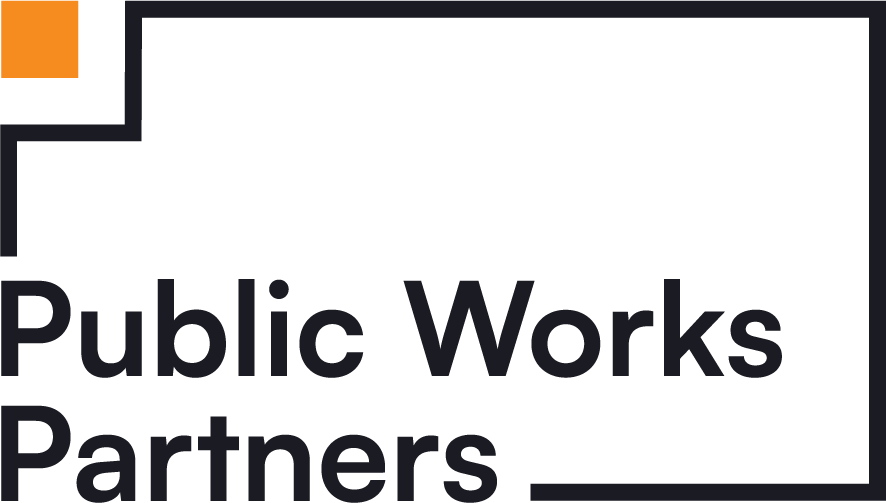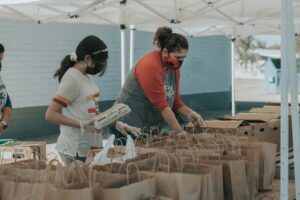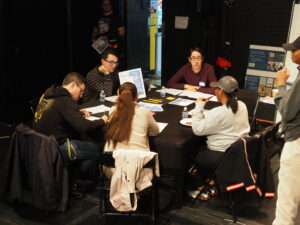At Public Works, the solutions we create for our clients take many forms, from documents like strategic plans, case studies, and evaluations to engagement activities like public meetings, focus groups, and trainings. While the solution differs project to project and client to client, we strive to bring the same collaborative spirit and emphasis on reaching historically marginalized communities to the process each time. We value the diverse experiences of our clients and we work hard to engage them in an iterative process that merges this knowledge with our expertise, always keeping an eye toward implementation.
Process with Purpose™ is our data-driven approach that consistently positions us to create solutions that address our clients’ needs. We believe that we must deeply understand the problem our client is trying to solve, the context our client is working within, and the stakeholders who will be impacted by our work in order to create solutions that ensure our approach aligns with the clients’ desires, constraints, and organizational culture.
The create solutions phase revolves around a commitment to collaboration and iteration. Following an analysis of information gathered during the assess and engage phase of Process with Purpose, we leverage data points to give our clients initial ideas, hold working sessions to get reactions and align our thinking with client goals, and then tweak our approach accordingly. We recognize that our clients are experts at what they do; we emphasize collaboration with our clients to help us understand what we don’t yet know, or what we might have missed. Finally, we conduct outside research and draw on our management and best practice expertise to develop a proposal that will be effective and implementable, and that will lead to our client’s desired outcome.
The following three examples illustrate this iterative process:
New York City Housing Authority Waste Management Plan

New York City Housing Authority (NYCHA) engaged Public Works to assist the agency with its Sustainability Agenda to cultivate safe, clean, and connected communities and support the City’s goal to send Zero Waste to Landfill by 2030. As part of this effort, Public Works sought insight from residents to understand their waste management needs, practices, and priorities. Our goal was to include all those impacted by waste management practices in the study, not just those who had time to attend a community meeting. Initially, we planned to table at select NYCHA developments in order to collect feedback, but we soon realized that this strategy would not lead to the reach we were hoping for. Not to be stopped, we drew on our past experience developing surveys to supplement our findings. Ultimately, our team designed a multi-pronged outreach strategy inspired by project research and our expertise in public outreach, that engaged stakeholders including residents, resident advisory boards, and property managers at their own time, space, and pace. Our grassroots outreach approach consisted of door-to-door canvassing with partner Green City Force, tabling at community centers, facilitated conversations with residents, and one-on-one interviews, as well as a bilingual survey. Our strategy enabled us to We reached 221 of the 335 developments and garnered substantive feedback from 4,690 English and Spanish-speaking NYCHA residents. Findings from our outreach were ultimately used to inform the design of a new waste management initiative, the NYCHA 2.0 Waste Management Plan. You can read our report, “Trash Talk: Findings from Resident Waste Management Outreach,” which appears as an appendix to the Plan.
Billion Oyster Project

We leveraged the expertise of Billion Oyster Project (BOP) and its partners as well as the firsthand experiences of students at the Urban Assembly New York Harbor School, a technical high school that works closely with BOP, to design a program to connect youth to welding-related jobs. We wanted to ensure that we learned from everyone the program would impact, so we engaged in a process that involved ongoing check-ins with BOP, expert interviews with stakeholders, a focus group with Harbor School students, a labor market analysis of welding careers in the NYC metro area, and a scan of comparable workforce development program models.The process greatly informed our understanding of the current state and laid the groundwork for the program design we ultimately proposed to BOP. From here, we developed a plan through internal team meetings and working sessions with BOP in which we melded BOP’s expertise as a provider with our deep knowledge of program design and management best practices. Through a diligent analysis of the factors at play, BOP’s desires for the program, and Public Works Partners’ expertise, we proposed a multi-organizational collaborative that offers a combination of education and training opportunities, paid work experience, and ongoing wraparound and professional development support services to participating youth.
Human Services Council

We have been working with the Human Services Council (HSC) to design and facilitate a project that brings together health and human service providers in Central and Northern Brooklyn with the goal of developing strong partnerships between these groups to address social determinants of health and identify sustainable approaches to funding. We began this work by conducting extensive background research on the Accountable Community for Health (ACH) model as well as surveying local community based human service organizations in HSC’s extensive local network. Knowing that we needed to dive in deeper to the survey responses, we worked with HSC to hold two focus groups with a select group of survey respondents. We also explored a potential partnership with an existing effort led by Community Care of Brooklyn.Ultimately, we invited eight organizations to participate in a series of collaborative meetings over the course of the year to inform the program design. Throughout this entire process we worked closely with HSC in bi-weekly meetings to coordinate these efforts, process new knowledge, and inform the ongoing development of the collaborative. Unfortunately, our work has paused due to the pandemic though we look forward to incorporating what we have learned about the human services and healthcare sectors in light of the immense demand the virus has placed on them.
These are just a few examples of how we collaborate with our clients to actively involve them, their partners, and their communities to design the best solutions to fit their needs. You can learn more about how we’ve used Process with Purpose to create innovative solutions for our clients by checking out our Clients page.




